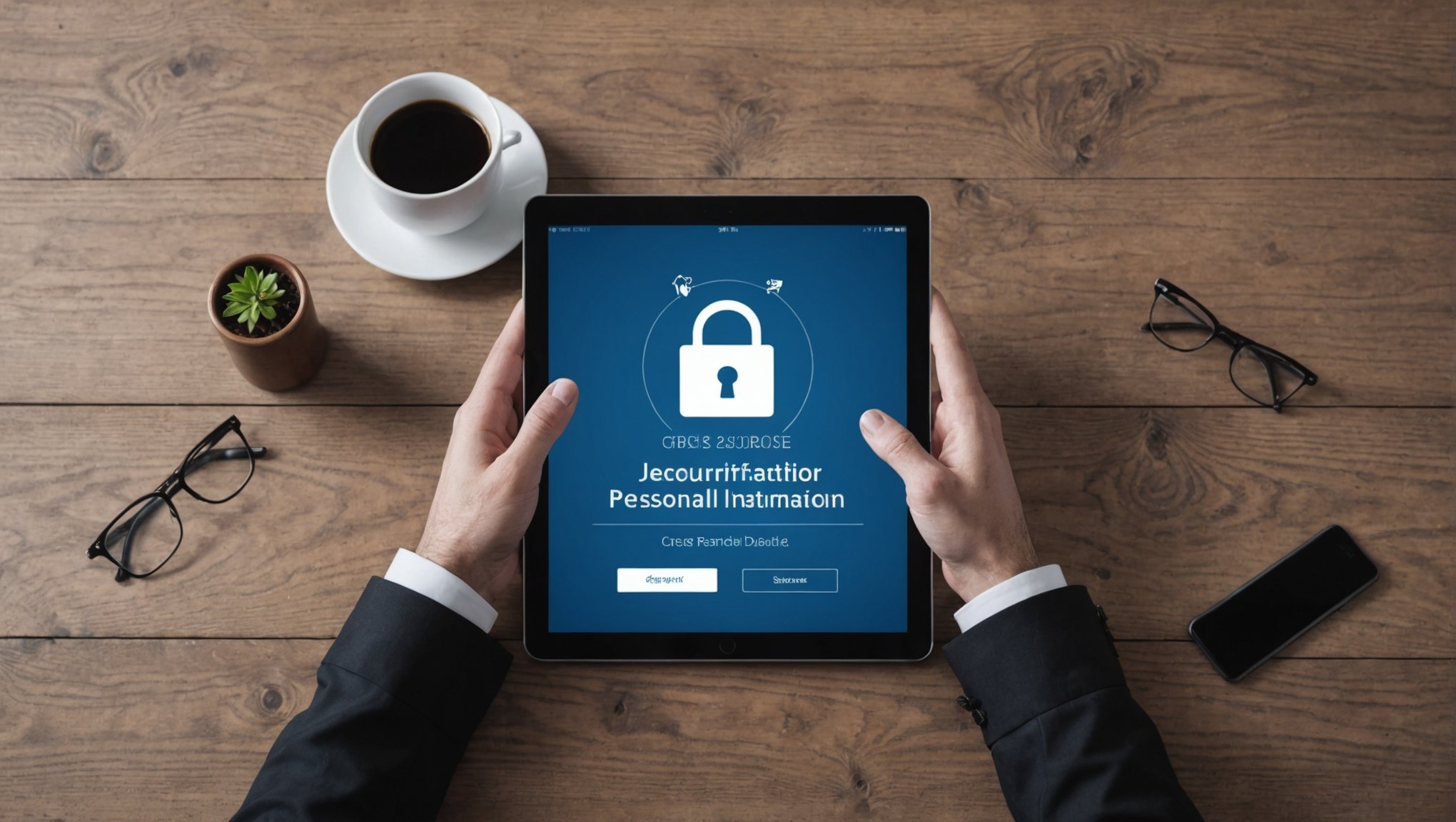In an era where data is considered the new oil, maintaining confidentiality, integrity, and privacy of personal information has become a pressing concern. This requirement is particularly crucial in the realm of application development, where capturing, storing, and processing personal information is often a part of the deal. The General Data Protection Regulation (GDPR) is a framework instituted by the European Union to ensure the protection of individual’s personal data. Failure to adhere to GDPR regulations can result in hefty fines, reputational damage, and loss of customers. In this article, you will discover the best practices for securing personal information in a GDPR-compliant application.
Understanding the GDPR Principles
To properly secure personal information in GDPR-compliant applications, you need to understand the principles that underpin GDPR. These principles dictate how personal data should be treated and protected. These include lawfulness, fairness, transparency, purpose limitation, data minimization, accuracy, storage limitation, integrity, and confidentiality.
In the same genre : What are the steps to configure a secure reverse proxy with Traefik in a Docker environment?
Lawfulness, fairness, and transparency mean the data should be processed legally, fairly, and in a transparent manner. Purpose limitation implies that data should only be collected for a defined and legitimate purpose. Data minimization suggests only the necessary data should be collected. Accuracy requires the data to be precise and up-to-date, while storage limitation advocates for data deletion or anonymization once it’s no longer needed. Lastly, integrity and confidentiality enforce secure and confidential handling of data.
These principles should guide the development and operation of your application. The goal is to foster trust with users and ensure you are using their data responsibly.
In parallel : What are the techniques for optimizing the performance of a Vue.js application?
Implementing GDPR-Compliant Data Processing
Once you understand the GDPR principles, the next step is to align your data processing activities with GDPR standards. In GDPR-compliant applications, data processing should always be carried out with the explicit consent of the user. In other words, users should have the freedom to choose whether or not their data is collected and processed.
You should provide clear information about the data you intend to collect, why you need it, how it will be used, who it will be shared with, and how long it will be kept. In addition to obtaining consent, you should also give users the option to withdraw their consent at any time. This can be achieved by implementing user-friendly mechanisms within the application that allow users to manage their consent settings.
Ensuring Robust Data Security
Data security is front and center in GDPR compliance. Applications should be designed and developed with data security in mind from the ground up. This means incorporating secure coding practices, and using encryption to protect data at rest and in transit.
You should also consider implementing other security measures, such as access control, intrusion detection systems, and regular security audits. Furthermore, adopting a Privacy by Design and by Default approach can help ensure that privacy and data protection are integral parts of your application design. This involves incorporating privacy and data protection into every stage of the application development process, rather than treating them as an afterthought.
Managing Data Breaches
Even with the most robust data security measures in place, data breaches can still occur. Therefore, it’s crucial to have a data breach response plan. This plan should specify the steps to be taken in the event of a data breach, including how to contain the breach, assess its impact, notify affected users, and report the breach to the relevant authorities within 72 hours, as required by GDPR.
Moreover, you should also consider implementing measures to detect and prevent data breaches before they occur. For example, regular security audits, vulnerability assessments, and penetration testing can help identify and address potential security weaknesses.
Respecting User Rights
Under GDPR, users have certain rights regarding their personal data. These include the right to access their data, correct inaccuracies, erase their data, restrict processing, object to processing, and move their data.
To respect these rights, you should build mechanisms into your application that allow users to exercise their rights easily. For example, you could provide a user dashboard where users can view, edit, and delete their data. You should also have processes in place to respond to user requests regarding their data within one month, as required by GDPR.
Securing personal information in a GDPR-compliant application is not a one-off task, but a continuous process that requires ongoing vigilance and commitment. By adhering to the principles of GDPR, implementing compliant data processing, ensuring robust data security, managing data breaches effectively, and respecting user rights, you can enhance the trust of your users and safeguard their valuable personal data.
Protecting personal information is not only a legal obligation but also a moral one. Let’s make the digital world a safer place for everyone.
Integrating Privacy Impact Assessments (PIAs)
Privacy Impact Assessments (PIAs) are an essential part of securing personal information within a GDPR-compliant application. A PIA is an assessment process that identifies the impact of proposed data processing activities on the privacy rights and freedoms of individuals. It’s a tool designed to help organizations identify and minimize the privacy risks of a project, particularly those involving personal data.
To conduct a PIA, one must define the nature, scope, context, and purposes of the processing. This involves identifying the type of personal data to be processed, the volume of data, the duration of the processing, and the number of data subjects involved. A thorough risk assessment of the potential impact on individuals’ privacy should also be carried out, considering all the possible ways privacy could be compromised.
Once the risks have been identified, the next step is to find ways to mitigate them. This could involve incorporating additional privacy measures into the application design, modifying the data processing activities, or even deciding not to proceed with the project if the risks outweigh the benefits.
Under GDPR, PIAs are mandatory for data processing operations that are likely to result in a high risk to the rights and freedoms of individuals. Therefore, integrating PIAs into your application development process can not only help you meet your GDPR obligations but also enhance your application’s privacy and security features.
Implementing Data Protection Officers (DPOs)
The appointment of a Data Protection Officer (DPO) is another crucial aspect of securing personal information in a GDPR-compliant application. A DPO is a professional who oversees an organization’s data protection strategy and its implementation to ensure compliance with GDPR requirements.
The DPO’s responsibilities include educating the company and its employees about GDPR compliance, conducting privacy audits, handling data protection inquiries from users, and acting as a point of contact between the company and regulatory authorities.
In GDPR-compliant applications, the DPO plays a central role in ensuring that personal data is processed in accordance with GDPR principles. They have to ensure that the application is designed to respect user privacy rights from the beginning and is continuously monitored and updated to maintain data privacy and security.
While GDPR requires the appointment of a DPO in certain cases, such as for public authorities or organizations that carry out large scale systematic monitoring of individuals, it is considered a good practice for any organization that processes personal data.
Securing personal data in a GDPR-compliant application is a comprehensive process that requires understanding and implementing the principles of GDPR, ensuring user consent, robust data security measures, effective data breach management, respecting user rights, integrating Privacy Impact Assessments, and possibly appointing a Data Protection Officer. Embracing these practices can not only help you avoid costly penalties for non-compliance but also build trust with your users and protect their privacy rights.
However, it’s important to remember that GDPR compliance is not a destination but a journey. It requires a continuous commitment to data privacy and security. As we venture deeper into the digital age, let’s strive to make privacy a default setting in every application, and create a safer digital world for everyone.











